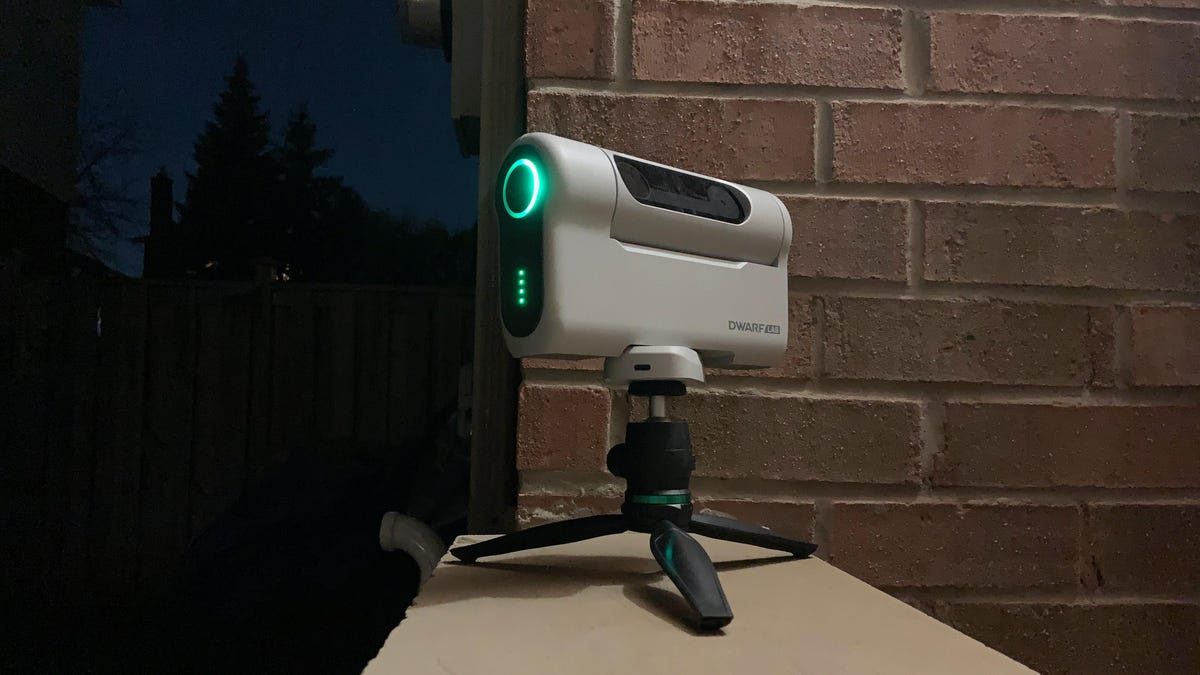Dwarf II Smart Telescope
Surprisingly powerful and robust for its size, but at times, a bit awkward to manage.
Dwarf II is a versatile, compact smart telescope that simplifies astrophotography. Suitable for day or night, it easily connects to mobile devices and features wide-angle and telephoto lenses but lacks an eyepiece. The Dwarf II, well-priced and equipped with GOTO and object tracking capabilities, captures very good 4K images of celestial phenomena, including the Moon, Sun, galaxies, nebulae, and star clusters.
Product Link
Pros
Reasonably priced
Compact and portable
Captures very good images for its size
Dual lens design
GOTO and object tracking work great
Cons
Awkward user experience
Requires basic knowledge of astrophotography
Lacks nightly astronomical highlights
Limited battery life
No watermarking of images
Backyard astrophotography is experiencing a surge in popularity thanks to telescopes becoming more user-friendly and, as a result, actually fun to use. However, cost and portability remain a barrier, making the Dwarf II Smart Telescope a smart, viable option despite some annoying shortcomings.
Dwarf II is a compact and portable smart telescope at an excellent price point. It’s also super flexible, featuring both wide-angle and telephoto lenses. Designed for use during both day and night, it conveniently connects to a user’s handheld device, such as a phone or tablet (iOS and Android). It operates without needing a traditional eyepiece (for better or worse). The telescope connects via both WiFi and Bluetooth.
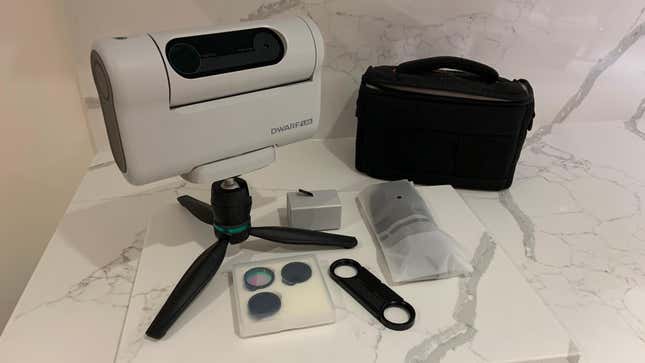
It’s primarily meant for astrophotography, allowing for imaging deep space objects like galaxies, star clusters, and nebulae while delivering a surprising level of sharpness for its size. During the day, Dwarf II can capture stunning landscapes and is also suitable for tracking moving objects, such as birds, thanks to its AI-enabled object-tracking feature.
DWARFLAB, the company behind the telescope, is registered in Hong Kong, though its operational department is in China. The associated app was recently upgraded to OS2.0, greatly enhancing its interface and functionality and introducing features like a built-in beginner’s guide. It’s important to note, however, that Dwarf II is not tailored for absolute beginners; it’s best suited for users who are comfortable moving beyond a camera’s “auto” features and those with some image processing experience. Dwarf II features a somewhat clumsy user interface that initially leads to stilted user experiences; however, as familiarity grows, so does the workflow, resulting in surprisingly good results.
Cost, accessories
The telescope comes in one of two packages. The Classic version, priced at $459, comes with a black carry bag, a rechargeable battery with a Type-C USB charger, a 64MB microSD card, and a mini tripod. At $595, the Deluxe version comes with these basic accessories: an extra battery, a UCH filter for light pollution, a pair of solar filters (to match the two lenses), and the filter adapter itself.
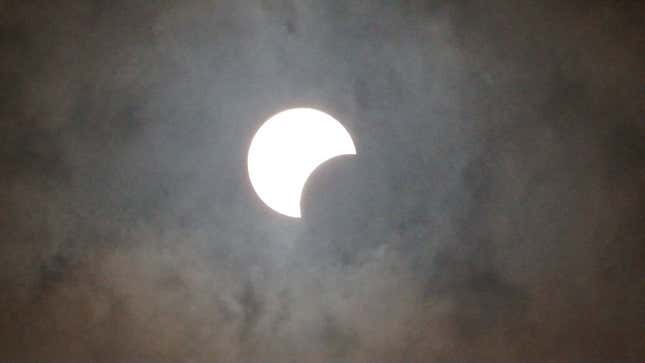
The Deluxe version is currently available at a 15% discount, bringing the price down to $505.7. This promotional sale runs until April 18, and to take advantage of the savings, customers should use the discount code SOLARECLIPSE at checkout.
The Deluxe package costs a bit extra, but it’s worth it; the filters vastly improve usability (remember, we have that exciting total solar eclipse coming up in April!), as does the extra battery (I found that the batteries lost their charge rather quickly, so the backup was good to have). As a nice touch, the company offers free shipping to the United States, Canada, and most EU countries ($69 purchase minimum).
The unit itself is nimble, sleek, and with a distinctive look. Dwarf II is barely larger than a book, measuring 8 inches wide, 5.1 inches long, and just 2.4 inches thin. Its compact, periscope design results in a low center of gravity for improved stability. However, at just 2.4 pounds (1 kilogram), it’s advisable to opt for a heavy-duty tripod to prevent shaking if you decide to upgrade from its small yet effective mini tripod. Dwarf II is among the smallest, lightest telescopes on the market, making it perfect for camping, hiking, or any scenario that requires minimal packing.
A major strength of Dwarf II is its double-duty capability, serving as a feature-laden camera during the day and as a handy robotic telescope at night. The device features a dual camera system—wide angle and telephoto—with a picture-in-picture capability, allowing users to toggle between the two views with a single click. A virtual joystick, displayed as a compact circle on the screen, enables camera movement across multiple axes at various speeds. I found the joystick to be jumpy and laggy and, at times, frustrating to use—a feature that could stand for some improvement. The camera is capable of gigapixel panoramic shooting, as well as capturing bursts, time-lapses, regular photos, and, of course, astronomy images.
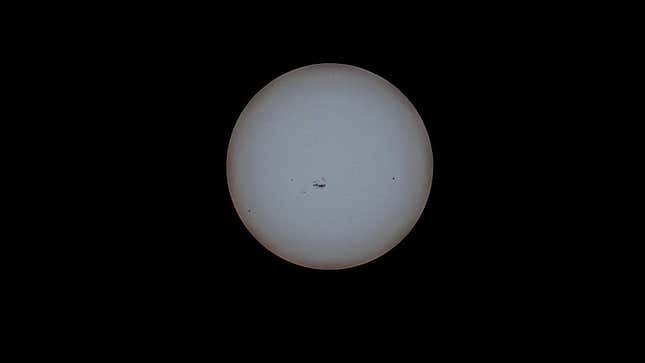
In case you’re wondering, Tinyscope was a predecessor to Dwarf II, but it was eventually discontinued. Unlike Tinyscope’s single telephoto lens, Dwarf II took the concept further with its dual lens, among many other new features.
Feature set and usage
It’s reasonably easy to get started on an astrophotography session, as Dwarf II features autofocus (to attain crisp views of stars), automatic calibration (to pinpoint its direction in the night sky), and one-click GOTO, in which the telescope automatically points to the target object as selected in the available catalog (experienced astronomers have the option of entering their coordinates). Navigating this UI was far from instinctive, leading me to confront the most dreaded of things: consulting the manual.
I liked the neat feature of being able to turn off the unit’s various lights to prevent possible interference during imaging. Combining Dwarf II’s timelapse feature with no auto-tracking was fun, allowing for creative captures of the “passing” full Moon, as shown below.
The app provides a searchable catalog of target objects. The app will let you know if an object is unavailable for imaging, such as below the horizon line. Still, it would be nice to have the option of having targets sorted according to peak availability. Thankfully, the catalog lists prospective target objects by category, such as nebulae, galaxies, star clusters, planets, etc.
A cautionary note about imaging planets. Observations of objects like Mars, Jupiter, and Saturn, while possible, don’t yield the best results (it’s still worth it, though; I managed to resolve Jupiter’s larger moons, which was pretty cool). Dwarf II is primarily intended to image the Moon, Sun, and deep space objects, in addition to non-astronomical daytime viewing (that said, I used Dwarf II to capture some really cool shots of the Moon during daylight hours).
I had an absolute hoot using Dwarf II to take photos and time-lapses of the Moon. The images were crisp and breathtaking, capturing details not visible to the human eye. It took some time and patience to get the settings just right, but it was worth it.
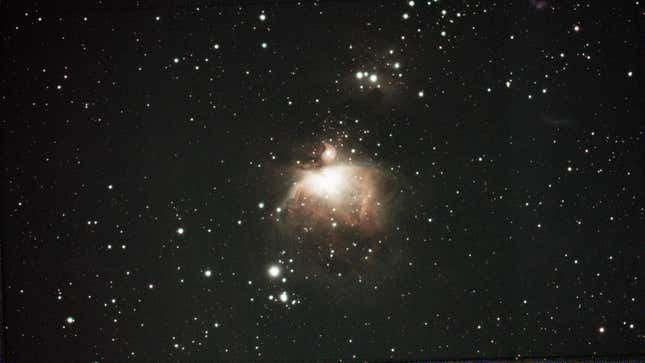
The app’s auto star tracking and stacking features enable long-exposure photography of deep sky objects, allowing for the instant creation of celestial images, including galaxies, nebulae, and star clusters. This robotic technology simplifies what is typically a demanding, complex, and often frustrating aspect of astrophotography. Indeed, the automation provided by Dwarf II and other smart telescopes is finally transforming astrophotography into a more accessible hobby. The telescope is good for objects larger than 15 arc minutes in size and with magnitudes below 9, making it ideal for capturing large and reasonably bright objects, such as the Pinwheel Galaxy, Orion Nebula, and Andromeda.
That said, Dwarf 2 is still fine for imaging smaller and dimmer objects, owing to its impressive focal lengths: 675 mm for telephoto and 48 mm for wide-angle. Its solar filters (available with the Deluxe version) allow for the safe imaging of the Sun, including sunspots and solar eclipses.
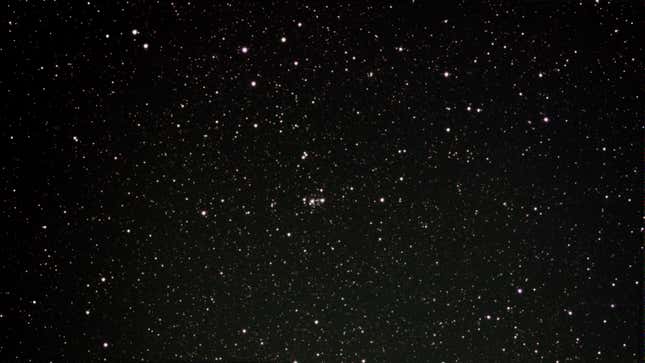
Dwarf II supports a maximum of 15-second exposures and automatically stacks up to 999 shots in real-time—traditionally a manual process that requires third-party imaging software. As a result, I could watch my observations improve through long exposures for instant gratification.
While shooting, I adjusted the “curve” settings to tweak the colors of the RGB channels to bring out the finer details of objects and to darken the blackness of space. The curves feature works as a built-in image editor, allowing me to save my tweaked images on the fly, which appear in my phone’s photo gallery. Dwarf II supports FITS and TIFF formats, enabling advanced users to export images to Adobe Lightroom, PixInsight editors, or in my case, GIMP.

Once a session is complete, the image automatically appears in the app’s album, which can be downloaded locally for sharing or further edits. As the images weren’t watermarked, I found it challenging to identify them days later properly. The images are labeled in the app but only accessible when the device is powered and linked.
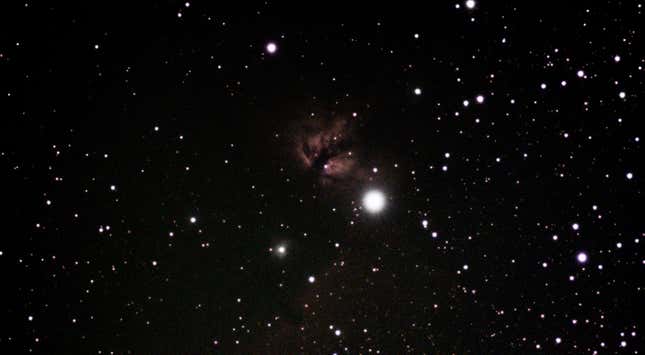
Dwarf II now features an enhanced connection system that simultaneously supports one primary connection and two secondary connections. While the two secondary connections can only view the telescope’s activity, the primary connection has exclusive control over operating and directing Dwarf II, which is fairly standard. Two secondary nodes are nice, but even more would be better. I’m imagining a bunch of kids at a campsite, all wanting to see the action on their smartphones.
Final words
I liked the Dwarf II, but I didn’t love it. True to its word, it does make astrophotography more accessible. Still, users lacking experience with cameras, or astrophotography in general, will have to muddle through an at-times challenging learning curve. Indeed, if terms like “exposure time,” “gain,” and “saturation” sound exotic, you’d best be prepared to learn about such things.
The astronomical images were very good, but I wouldn’t describe them as outstanding. Given the size of the telescope and its reduced focal length, that shouldn’t be a surprise.
In terms of competing offerings, Vespera’s Observation Station and the Seestar S50 are both (reasonably) affordable, compact, and powerful. Other options include Celestron’s NexStar 130SLT Computerized Telescope and the Sky-Watcher 8″ Collapsible Dobsonian Telescope. For those willing to spend a bit more, Unistellar’s robotic telescopes, eQuinox 2 and Odyssey Pro, are excellent options.
Disclaimer: DWARFLAB let me keep the Dwarf II, but I retained full editorial control over this review.

